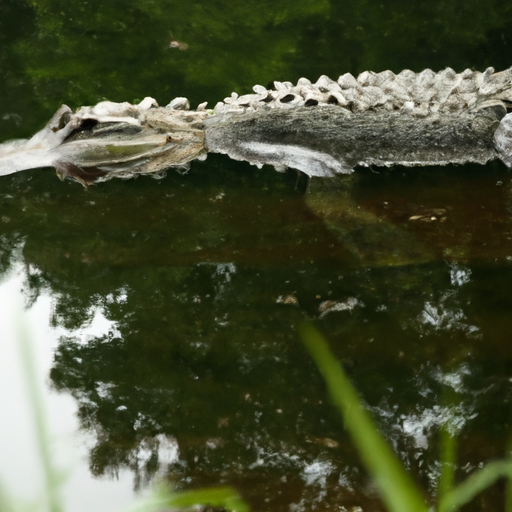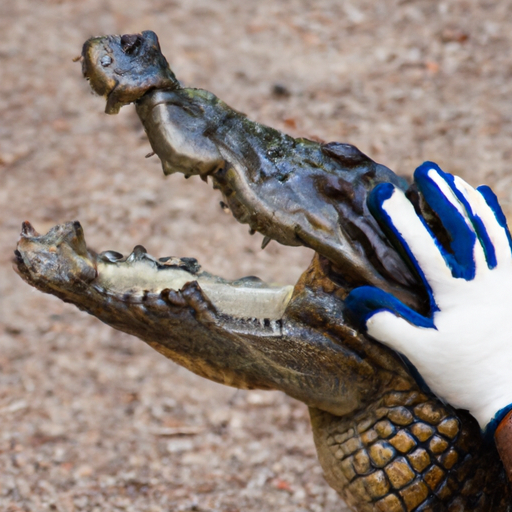So you’re probably wondering if there are alligators in Canada. It’s a valid question considering Canada is known for its cold weather and diverse wildlife.
Well, the answer is both surprising and straightforward – no, there are no alligators in Canada.
Despite its vast landscapes and numerous bodies of water, the country’s climate and habitat are simply not suitable for alligators to thrive.
But hey, don’t let that deter you from exploring Canada’s incredible wildlife and natural wonders!
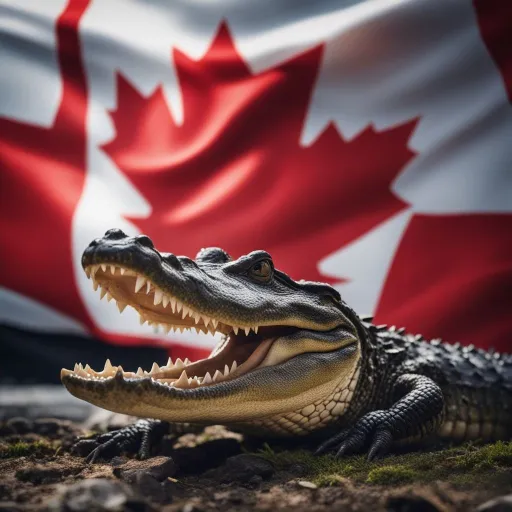
Distribution of Alligators
Native Habitat of Alligators
Alligators are primarily native to the southeastern United States, specifically in states such as Florida, Louisiana, Georgia, and Texas.
They inhabit both freshwater and brackish environments, including swamps, marshes, lakes, rivers, and ponds.
These reptiles are well-adapted to these habitats, as they have evolved to withstand varying water levels, temperature fluctuations, and abundant aquatic vegetation.
Introduction of Alligators to New Habitats
The introduction of alligators to new habitats outside their native range has occurred in various parts of the world.
This has resulted from illegal release, intentional introductions for commercial purposes, or accidental escapes.
Alligator farming activities have also contributed to the establishment of populations in certain regions.
It is important to note that the introduction of alligators to new habitats can have significant ecological implications and pose risks to native species.
Alligator Distribution in North America
Alligator populations are predominantly found in the southeastern region of the United States. While they have been historically absent in Canada, there have been occasional sightings and reports of alligators in certain Canadian provinces. These sightings have sparked curiosity and raised questions about the presence and potential establishment of alligators in Canada. It is crucial to gather and analyze scientific data to gain a deeper understanding of the current distribution and the factors that may influence their expansion.
Historical Presence of Alligators in Canada
The historical presence of alligators in Canada is not well-documented or supported by scientific evidence. While there have been occasional reports of alligators in Canadian provinces like Ontario, Quebec, and British Columbia, these sightings are considered rare and likely isolated incidents. The climate, geography, and available habitats in Canada are not typically suitable for the long-term survival and reproduction of alligators. However, continued monitoring and research are essential to accurately assess the potential existence of alligator populations in Canada.
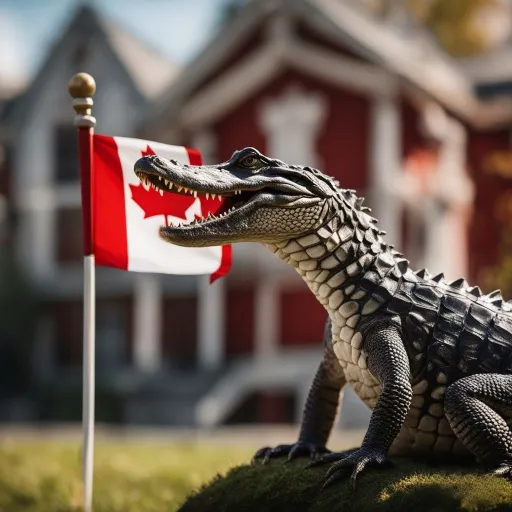
Alligators in the United States
Alligator Species in the United States
The United States is home to two species of alligators: the American alligator (Alligator mississippiensis) and the Chinese alligator (Alligator sinensis). The American alligator is the more widely distributed species, with a range that spans from Texas to North Carolina, primarily in the southeastern states. The Chinese alligator is critically endangered and is only found in a small portion of eastern China.
States with Alligator Populations
In the United States, alligators are most commonly found in Florida and Louisiana. These states have extensive wetland systems, including the Everglades in Florida and the bayous of Louisiana, which provide suitable habitats for alligator populations. Other states where alligators are present to varying degrees include Alabama, Georgia, Mississippi, South Carolina, Texas, and North Carolina.
Conservation Efforts in the United States
Due to their ecological importance and cultural significance, alligator populations in the United States are protected under federal and state laws. Various conservation efforts are in place to ensure the sustainable management of alligator populations and their habitats. These include regulations on hunting and harvesting, habitat preservation, public education and awareness programs, and scientific research to monitor population trends and identify potential threats.

Canadian Reptile Species
Reptile Diversity in Canada
Canada boasts a diverse range of reptile species, despite its challenging climate and limited suitable habitats. These reptiles are adapted to survive in various regions, including forests, grasslands, wetlands, and deserts. Some of the native reptiles in Canada include the common garter snake, painted turtle, western skink, and smooth green snake. These reptiles play important roles in their respective ecosystems and contribute to overall biodiversity in Canada.
Native Reptile Species
While Canada has a relatively small number of native reptile species compared to warmer climates, the reptiles that do inhabit the country are well-adapted to the local conditions. For example, the western painted turtle and the eastern snapping turtle can survive in colder temperatures by hibernating or seeking out warmer areas. These native species have evolved to cope with the seasonal changes and limited availability of suitable habitats in Canada.
Reptile Threats and Conservation
Reptiles in Canada face various threats to their survival, including habitat loss and fragmentation, climate change, pollution, disease, and human activities such as road mortality and illegal collection. Conservation efforts aim to mitigate these threats through habitat restoration and protection, public education on responsible behavior, and the implementation of policies and regulations to safeguard reptile populations. It is crucial to recognize the importance of reptile conservation as part of broader biodiversity conservation efforts.
Potential Alligator Habitats in Canada
While the current distribution of alligators in Canada is limited and uncertain, some factors can be considered when assessing potential habitats. Alligators require warm temperatures, abundant water sources, and suitable prey species for their survival. Certain southern regions of Canada, such as the Okanagan Valley in British Columbia, may experience warmer climates and have suitable water bodies that could, in theory, support alligator populations. However, these areas still face challenges with some of the necessary habitat requirements, and more research is needed to determine the feasibility of alligators establishing populations in Canada.
Climate and Habitat Suitability
Climate Conditions for Alligators
Alligators thrive in warm climates, as they are ectothermic and rely on external sources of heat for regulating their body temperature. The ideal temperature range for alligator activity and reproduction is between 82°F and 92°F (28°C to 33°C). Cold temperatures pose a significant risk to alligator populations, as prolonged exposure to freezing temperatures can lead to death or severe physiological stress.
Alligator Habitat Preferences
Alligator habitats offer a combination of suitable environmental conditions, including access to freshwater bodies, ample vegetation cover, and areas for basking and nesting. Key factors for suitable alligator habitats include water temperature, depth, and quality, abundance of prey species, vegetation for nesting and shelter, and suitable land-to-water ratios. They prefer habitats with minimal disturbance and limited human activity.
Comparison of Canadian and Preferred Habitat Conditions
The climate conditions in Canada, particularly in the northern regions, are generally not conducive to alligator survival. Canada experiences long, harsh winters with freezing temperatures and limited periods of warm weather. These extreme cold conditions make it challenging for alligators to survive and reproduce successfully. Additionally, the availability of suitable water bodies, such as swamps and marshes, is limited in many parts of Canada.
Suitable Habitat Regions in Canada
While the overall suitability of alligator habitats in Canada is limited, certain regions may have more favorable conditions.
The southernmost parts of British Columbia, specifically the Okanagan Valley, have a milder climate compared to other parts of Canada and may experience warmer temperatures during the summer months.
The presence of suitable water bodies, such as lakes and wetlands, further contributes to the potential suitability of these regions as alligator habitats.
However, it is important to note that several other factors, including prey availability, habitat connectivity, and the ability to withstand freezing temperatures, still need to be considered.

Sightings and Reported Encounters
Historical Sightings of Alligators in Canada
Over the years, there have been sporadic reports and sightings of alligators in various Canadian provinces. These sightings typically occur in the southern parts of the country, where the climate is relatively milder. Reports of alligators in provinces like Ontario, Quebec, and British Columbia have raised curiosity and sparked discussions regarding their potential presence in Canada. However, it is important to approach these reports with caution and assess them critically through scientific investigation and documentation.
Unconfirmed Sightings and Reports
While there have been numerous anecdotal reports of alligator sightings in Canada, many remain unconfirmed or lack substantial evidence. Sightings often rely on eyewitness accounts, which can be subjective and prone to misinterpretation. Without corroborating physical evidence or scientific documentation, it is challenging to determine the legitimacy of these reports. Nonetheless, unconfirmed sightings serve as reminders to remain vigilant and continue monitoring potential alligator activity in Canada.
Explanations for Sightings in Unlikely Areas
In some cases, sightings of alligators in unlikely areas may be attributed to misidentification or hoaxes. Certain reptiles, such as large snapping turtles or even escaped pet caimans, may resemble alligators from a distance or in certain lighting conditions. People’s unfamiliarity with these animals, combined with exaggeration or intentional misrepresentation, can contribute to the perceived presence of alligators in areas where they are unlikely to occur naturally.
Hoaxes and Misidentifications
Hoaxes and misidentifications of alligator sightings are relatively common. The allure and excitement surrounding the possibility of alligators in Canada can lead to practical jokes or sensationalized stories. It is crucial to approach alligator sightings with skepticism and rely on scientific evidence and expert evaluation to validate the presence of these reptiles. Proper documentation and reporting procedures should be followed to distinguish genuine sightings from hoaxes or misidentifications.
Invasive Species Concerns
Introduction and Impact of Invasive Species
The introduction of non-native species, including alligators, can have severe ecological impacts on native ecosystems. Invasive species can outcompete native species for resources, disrupt food chains, alter habitat structures, and potentially drive native species to extinction. Intentional or accidental introductions of alligators into new habitats can threaten the ecological balance and biodiversity of the invaded regions.
Alligator Introduction Implications
If alligators were to establish populations in Canada through intentional or accidental introductions, the implications could be significant. Their presence could disrupt local ecosystems, prey on native wildlife species, and alter habitat structures. The potential impacts on indigenous reptile populations, amphibians, birds, and even mammals should not be underestimated. Therefore, preventing the establishment of alligators in non-native habitats is essential to safeguard native fauna and maintain ecological integrity.
Potential Environmental Consequences
The introduction of alligators into ecosystems where they do not naturally occur can have far-reaching environmental consequences. Changes in predator-prey dynamics, alteration of aquatic vegetation communities, and the displacement of native species can disrupt ecological processes and lead to cascading effects throughout the food web. These long-term consequences can be particularly detrimental to vulnerable species and native biodiversity.
Risks to Native Fauna
Native reptiles and other wildlife in Canada may not have evolved the necessary adaptations to coexist with alligators. The presence of alligators could result in increased predation pressure on native species, leading to declines in populations and potential extinctions. Additionally, alligators may directly compete with native predators for resources, further exacerbating the impacts on local fauna. Taking proactive measures to prevent the introduction and establishment of alligators is crucial for the conservation of Canadian wildlife.
Alligator Legislation and Regulations
Canadian Laws on Keeping Exotic Animals
Canada has laws and regulations in place to govern the keeping and importation of exotic animals, including alligators. These laws aim to prevent the introduction of invasive species, protect public safety, and ensure the welfare of animals. Federal legislation, such as Canada’s Wildlife Act and the Captive Wildlife and Alternatives to Live Animal Use in Education and Interactive Exhibits Regulations, provides a framework for regulating exotic species.
Provincial Regulations on Alligators
Individual Canadian provinces have additional regulations and guidelines specific to the keeping and possession of exotic animals, including alligators. Provinces such as Ontario, British Columbia, and Quebec have provisions in place to restrict or prohibit the ownership of certain exotic species, including alligators. These regulations help ensure public safety, prevent the unauthorized release of animals, and discourage the establishment of non-native populations.
Permits and Authorization for Exotic Species
In order to own or exhibit alligators or any other exotic species in Canada, individuals must obtain the necessary permits and authorizations from the appropriate authorities. These permits typically involve stringent requirements, including demonstrated expertise in handling and care, provision of secure and suitable housing, and the ability to meet specific welfare standards. The permitting process is designed to assess the competence and commitment of individuals seeking to keep exotic animals.
Penalties and Consequences for Violations
Violations of Canadian laws and regulations pertaining to the keeping of exotic animals, including alligators, can result in penalties and consequences. These penalties may include fines, seizure of animals, and prohibition from future ownership or exhibition of exotic species. The severity of the penalties may vary depending on the nature of the violation, the potential risks involved, and the regulatory framework in place at the provincial and federal levels.
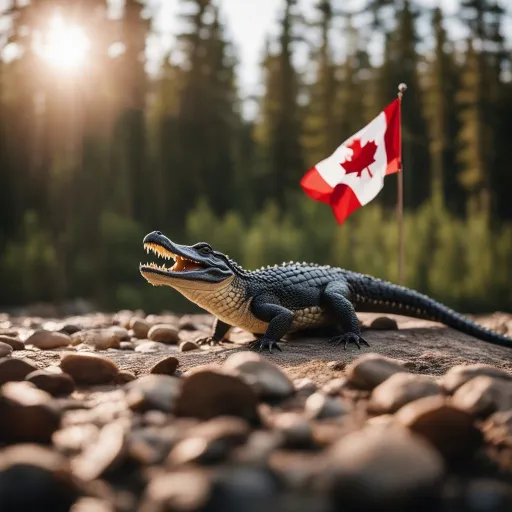
Educational Programs and Awareness
Promoting Alligator Awareness in Canada
Educational programs and initiatives play a crucial role in promoting awareness and understanding of alligators and their potential impacts. By providing accurate and evidence-based information, these programs can help dispel misconceptions, address public concerns, and foster a sense of responsibility towards exotic animals. Raising alligator awareness can also encourage responsible behavior and reporting, thus aiding in monitoring and managing potential alligator sightings.
Educational Initiatives and Materials
Various educational initiatives and materials can aid in disseminating information about alligators in Canada. These can include workshops, seminars, school programs, and online resources that educate the public about alligator biology, habitats, and conservation. By offering engaging and accessible materials, such as brochures, fact sheets, and interactive online content, educational initiatives can enhance public knowledge and engagement.
Public Safety and Alligator Education
Alligator education should prioritize public safety, particularly in areas where alligators are known to naturally occur. Educating residents, tourists, and outdoor enthusiasts about alligator behavior, appropriate precautions, and respectful coexistence can help minimize potential conflicts and ensure the well-being of both humans and alligators. Public safety measures, such as signage, designated viewing areas, and informative literature, can further promote a safe and enjoyable experience for all.
Conservation Organizations
Conservation organizations play a critical role in promoting alligator awareness, habitat preservation, and responsible management practices. These organizations collaborate with governments, researchers, and communities to develop conservation strategies, conduct scientific research, and engage the public in conservation efforts. By advocating for sustainable management practices and disseminating educational materials, conservation organizations contribute to the long-term conservation of alligators and their habitats.
Future Prospects and Monitoring
Remote Monitoring and Surveillance
Advancements in technology have enabled the use of remote monitoring and surveillance techniques to study animal populations, including alligators.
Remote cameras, acoustic monitoring, and satellite tracking can provide valuable insights into alligator behavior, movement patterns, and habitat use.
These monitoring techniques are vital for understanding alligator distribution, identifying potential colonization of new habitats, and assessing population trends.
Tracking and Research Efforts
Conducting dedicated tracking and research efforts is crucial for gaining a comprehensive understanding of alligator populations and their potential expansion.
Research projects that focus on tracking individual alligators, studying their life history traits, and collecting genetic samples can provide valuable data for population assessments.
These research efforts can inform conservation strategies and management decisions regarding alligator presence and potential impacts.
Detection Strategies and Tools
Developing effective detection strategies and tools is essential for accurately assessing the presence or absence of alligators in Canada. This can include the use of environmental DNA sampling, which involves detecting genetic material left behind by alligators in water bodies. Additionally, citizen science initiatives, where the public is encouraged to report sightings, can contribute to data collection efforts and improve detection rates.
Continued Surveillance Measures
To maintain an accurate understanding of alligator distribution in Canada, continued surveillance measures are necessary.
Regular monitoring of potential habitat regions, surveys for alligator presence, and collaboration between researchers and citizen scientists can help detect any changes or expansions in alligator populations.
This ongoing surveillance is fundamental for conservation efforts, invasive species management, and addressing public concerns regarding alligator presence in Canada.
Final Thoughts
The current status of alligators in Canada remains uncertain, with occasional sightings and reports fueling public curiosity and discussion.
While the probability of established alligator populations in Canada is considered low, continued monitoring and research efforts are essential to accurately assess their presence and potential impacts.
It is vital to address public concerns, promote responsible ownership and education, and prioritize the conservation of native reptile species.
By combining scientific knowledge, proactive conservation measures, and public awareness, Canada can effectively protect its diverse wildlife while maintaining ecological integrity.


